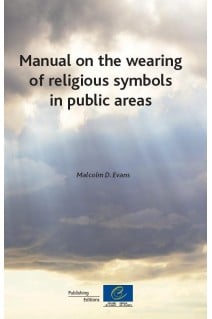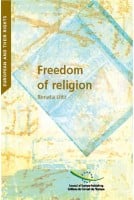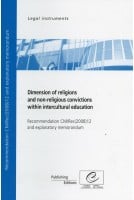



This manual explores how the European Convention on Human Rights relates to the freedom of thought, conscience and religion. It identifies the key concepts which can be found in the jurisprudence of the European Court of Human Rights and examines the role and responsibilities of both state and citizen.The central issue addressed is the wearing of religious symbols in public areas. For this purpose, the author first looks at a number of fundamental topics, including the `visibility' of religions and beliefs in the public sphere, and the notion of `wearing religious symbols'.The essential questions policy makers need to ask when addressing issues concerning the wearing of religious symbols are then listed. Finally, the manual seeks to apply these principles and approaches to a number of key areas such as state employment, schools and universities, the private sector and the criminal justice system.
I General Introduction
II The Freedom of Thought, Conscience and Religion: an Introduction
(A) The `Forum Internum'
(B) The Manifestation of Religion or Belief
(C) Restrictions upon the Manifestation of Religion or Belief
(D) The Education of Children
III The Key Concepts Emerging from the Practice of the European Court of Human Rights
(A) The Principle of Respect
(B) The Principle of Individual and Community Autonomy
(C) Non-discrimination in the Enjoyment of the Rights
(D) Living Instrument
IV The Role and Responsibilities of the State
(A) Neutrality and Impartiality
(B) Fostering Pluralism and Tolerance
(C) Protecting the Rights and Freedoms of Others
V The Role and Responsibilities of Individuals and Religious Communities
VI The Wearing of Religious Symbols in Public Areas: Definitional Issues
(A) The `Visibility' of Religions and Beliefs in Public Life and in the Public Sphere
(B) What is a `Religious Symbol'?
(C) `Wearing' Symbols and the Scope of the Manual
(D) What is a `Public Area'?
(E) Conclusion
VII The Wearing of Religious Symbols: the Practical Application of the Principles Identified
(A) The Basic Framework: a Brief Recapitulation
(B) The Key Questions to be Considered
VIII The Approach in Action: Areas of Practical Application
(A) Restrictions Flowing from Laws of General Application
(B) The Wearing of Religious Symbols by those in General State Employment
(C) The Wearing of Religious Symbols in Public Educational Institutions
(D) The Private Sector
(E) The Wearing of Religious Symbols and the Criminal Justice System
Annexes
I Relevant Applicable International Human Rights Instruments
II Thematic Index
III List of Judgments and Decisions Cited (by Alphabetical Order)
IV Glossary
Télécharger un extrait (1000)





This manual explores how the European Convention on Human Rights relates to the freedom of thought, conscience and religion. It identifies the key concepts which can be found in the jurisprudence of the European Court of Human Rights and examines the role and responsibilities of both state and citizen.The central issue addressed is the wearing of religious symbols in public areas. For this purpose, the author first looks at a number of fundamental topics, including the `visibility' of religions and beliefs in the public sphere, and the notion of `wearing religious symbols'.The essential questions policy makers need to ask when addressing issues concerning the wearing of religious symbols are then listed. Finally, the manual seeks to apply these principles and approaches to a number of key areas such as state employment, schools and universities, the private sector and the criminal justice system.
Attention, en vertu de nos conditions générales de vente, l'achat des PDF/epub est réservé aux particuliers.
